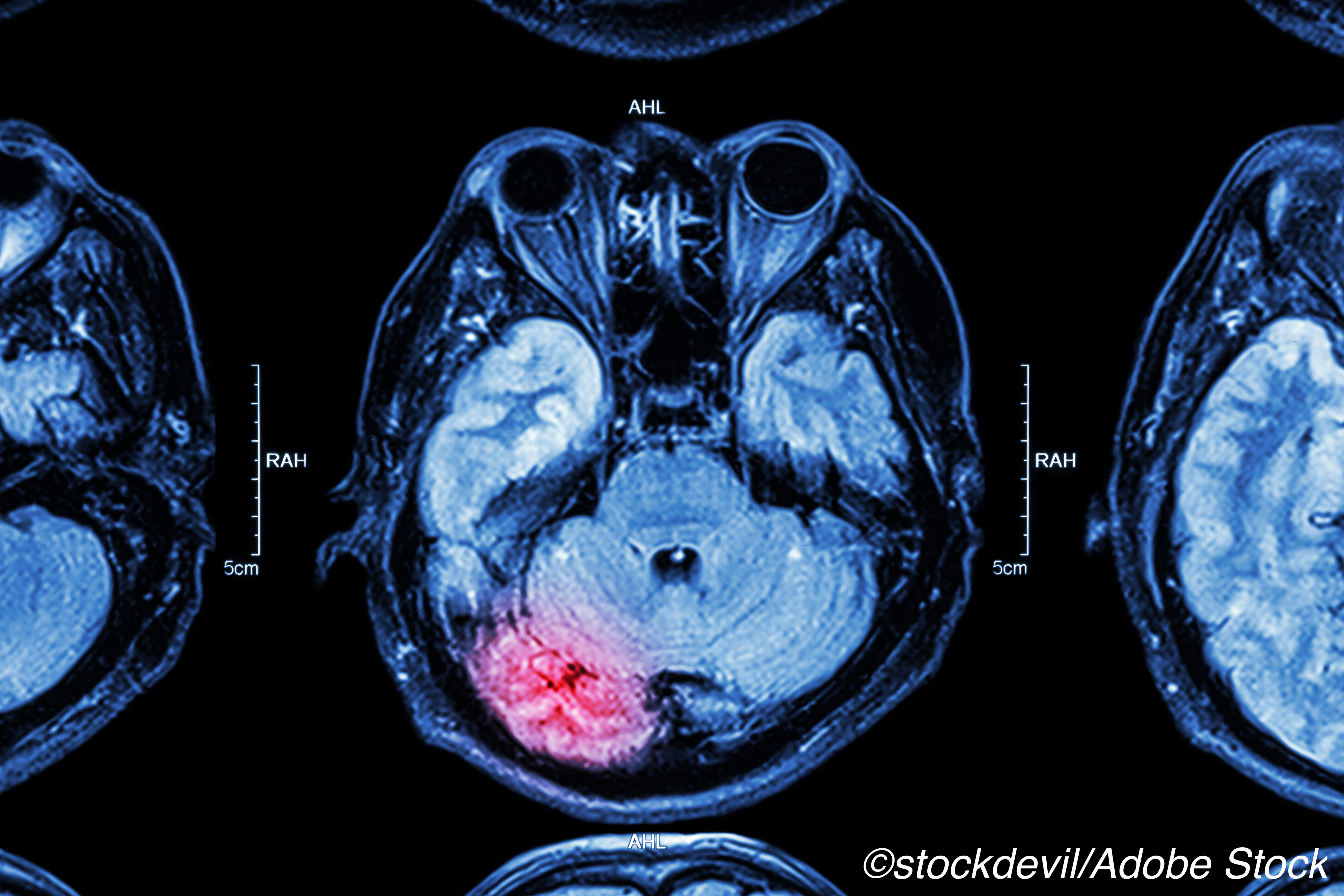
Extended follow-up of patients with unruptured brain arteriovenous malformations (AVMs) from the ARUBA trial continued to show superiority for medical versus interventional management in preventing symptomatic stroke or death, secondary analysis showed.
Data through a mean 50.4 months of follow up showed that the incidence of death or symptomatic stroke was lower with medical management alone (15 of 110, 3.39 per 100 patient-years) versus medical management with interventional therapy (41 of 116, 12.32 per 100 patient-years; HR 0.31, 95% CI 0.17-0.56).
“After extended follow-up, ARUBA showed that medical management alone remained superior to interventional therapy for the prevention of death or symptomatic stroke in patients with an unruptured brain arteriovenous malformation,” wrote Jay Mohr, MD, of Columbia University in New York City, and coauthors in Lancet Neurology.
“The data concerning the disparity in outcomes should affect standard specialist practice and the information presented to patients,” they continued. “The even longer-term risks and differences between the two therapeutic approaches remain uncertain.”
ARUBA compared medical and interventional treatment strategies in adults with unruptured AVM who never had interventional therapy. Trial recruiting was halted at 226 patients (initial goal was 800) after planned interim analysis showed that medical management alone was superior in preventing symptomatic stroke or death, with the composite endpoint seen in about 31% of those in the interventional group and about 10% in the medical management only group at mean 33.3 month follow-up (HR 0.27 favoring medical management).
These interim results and funding issues — the NIH’s National Institute of Neurological Disorders and Stroke (NINDS) declined to fund additional work — affected planned follow-up.
“Insufficient follow up is indeed the major shortcoming for ARUBA,” noted Peter Rothwell, MD, PhD, of University of Oxford in England, in an accompanying editorial.
“Given the young age of the trial cohort (mean 44.4 years) and the low mortality at 5 years (3%), average life expectancy of these patients is likely to be several decades, and so follow up to at least 10 years, and ideally 20 years, would have been desirable,” Rothwell wrote. “Long-term follow up has been vital in understanding the effects of other interventional treatments in cerebrovascular disease.”
“NINDS should have funded the study of long-term follow up, despite unsupportive peer review,” he added. “Most of the cost of the trial had already been incurred and follow-up could have been done relatively cheaply. Patients who generously agreed to be randomly assigned in ARUBA, and future similar patients, have been let down by NINDS.”
Longer-term outcomes in AVM management are scarce. Another study with up to 12 years follow up in patients 16 or older with unruptured AVM found rates of death or sustained morbidity was lower with medical management for the first 4 years of follow-up, but similar thereafter through a median of 6.9 years. The rate of nonfatal symptomatic stroke or death due to AVM, associated aneurysm, or intervention was lower with medical management, and follow-up is ongoing.
ARUBA was a non-blinded, randomized multicenter trial that included patients 18 or older with unruptured AVM between April 2007 and April 2013. The lesion was considered eligible for intervention in all cases, but patients were randomized to medical management alone (n=110) or medical management plus intervention (n=116; intervention included neurosurgery, embolization, or stereotactic radiotherapy, in any order, number, or combination). The primary outcome was time to death or symptomatic stroke interpreted with intention to treat analysis.
Mean age was about 44 years in both groups and 40% (medical treatment group) and 43% (interventional group) were female. The most common presenting symptoms were headache (48% to 55%) and seizure (41% to 45%), with a substantial number of asymptomatic patients (45% and 39% for medical and interventional groups, respectively). Modified Rankin Scale scores were 0 (no disability; 46% to 49% for medical versus interventional groups) and 1 (mild disability; 54% to 51%, respectively).
Concurrent aneurysms on a feeding artery or within the AVM nidus were present in 19% of the medical management group and 13% of the interventional group. Unrelated aneurysms were seen in 6% and 3% of the medical and interventional groups, respectively.
Two patients in the medical management group and four in the interventional therapy group died during follow-up, with two interventional deaths attributed to aspects of the intervention. Adverse events were observed less frequently in the medical management compared with interventional group (58.97 versus 78.73 per 100 patient-years; risk difference –19.76, 95% CI –30.33 to –9.19).
“Ironically, had the critics supported long-term follow-up of ARUBA, the results might eventually have been more supportive of intervention. Given the psychological impact on patients of knowing that they harbor a potentially dangerous arteriovenous malformation, the risks of intervention might have been acceptable for many patients even if the medical treatment group did not catch-up until 10–15 years,” the editorialist observed.
Limitations included limited follow-up with a relatively young population. Because there were fewer included patients than planned, estimates were less precise than anticipated.
-
Death or symptomatic stroke with unruptured brain arteriovenous malformations (AVMs) was lower for medical management alone (3.39 per 100 patient-years) than medical management with interventional therapy (12.32 per 100 patient-years; HR 0.31) in extended follow-up analysis of ARUBA trial data.
-
Even longer-term risks and differences between the two therapeutic approaches remain uncertain; ARUBA was stopped after interim analysis and planned follow-up for 10 additional years was not funded.
Paul Smyth, MD, Contributing Writer, BreakingMED™
ARUBA was funded internationally by the NIH/NINDS. The post-NIH funding period (2014–15) was supported by a gift from the Vital Projects Fund.
Mohr declared no competing interests.
Rothwell declared no competing interests.
Cat ID: 130
Topic ID: 82,130,730,130,192


